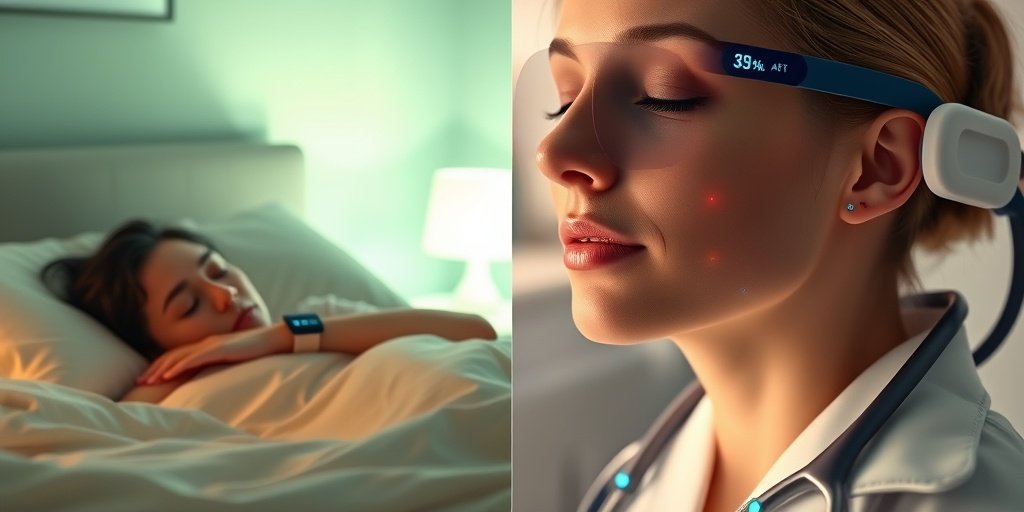⚡ Quick Summary
This review highlights the significant impact of sleep quality on skin pigmentation, revealing that poor sleep can lead to alterations in skin parameters such as melanin and hydration. The study emphasizes the need for further research to understand the underlying mechanisms and potential clinical implications.
🔍 Key Details
- 📊 Focus: Relationship between sleep quality and skin pigmentation
- 🔬 Studies reviewed: Experimental, clinical, and epidemiological
- 🧬 Key factors: Melanocyte activity, circadian genes (e.g., PER1, BMAL1), HPA activation
- 🧪 Conditions examined: Melasma, rosacea, acanthosis nigricans
🔑 Key Takeaways
- 😴 Sleep deprivation disrupts skin functions and can lead to pigmentary disorders.
- 🧬 Melanocyte biology is influenced by sleep patterns and hormonal balance.
- 🌙 Circadian rhythm disruption is linked to changes in skin pigmentation.
- 💧 Poor sleep affects skin hydration and barrier function.
- 🧪 Clinical associations include conditions like melasma and rosacea.
- 🧠 HPA axis disruption leads to increased cortisol and inflammation, impacting melanogenesis.
- 🔍 Future research may utilize wearable technology for real-time assessments.

📚 Background
Sleep is essential for maintaining various physiological functions, including those related to the skin. Recent studies have begun to uncover the intricate connections between sleep quality and skin health, particularly in how sleep disturbances can lead to changes in skin pigmentation and overall appearance. Understanding these relationships is crucial for developing effective interventions for skin-related issues.
🗒️ Study
The review conducted by Xu et al. synthesizes findings from multiple studies that explore the relationship between sleep quality and skin pigmentation. By examining both human and animal studies, the authors aimed to clarify how factors such as melanocyte activity and circadian genes contribute to skin color changes associated with sleep disturbances.
📈 Results
The findings indicate that poor sleep can significantly alter skin parameters, including melanin levels, hemoglobin concentration, and hydration. These changes are often mediated through mechanisms such as keratinocyte barrier impairment and microbiome imbalance. Additionally, conditions like obstructive sleep apnea were found to exacerbate pigmentation changes due to hypoxia-induced inflammation.
🌍 Impact and Implications
The implications of this research are profound, suggesting that improving sleep quality could be a viable strategy for enhancing skin health. As we continue to explore the connections between sleep and skin pigmentation, there is potential for developing targeted therapies and preventive measures for various pigmentary disorders. The integration of wearable technology and AI-based skin imaging could further personalize treatment approaches.
🔮 Conclusion
This review underscores the critical role of sleep quality in influencing skin pigmentation and overall skin health. As research progresses, we anticipate a deeper understanding of the mechanisms at play, paving the way for innovative solutions to address skin-related issues linked to sleep disturbances. Prioritizing sleep may not only enhance our well-being but also improve our skin’s appearance.
💬 Your comments
What are your thoughts on the relationship between sleep and skin health? Have you noticed changes in your skin with varying sleep patterns? Let’s discuss! 💬 Leave your comments below or connect with us on social media:
The Impact of Sleep Quality on Skin Color.
Abstract
Sleep plays a crucial role in regulating immune, endocrine, and skin functions. Increasing evidence suggests that sleep deprivation and circadian rhythm disruption can impact skin pigmentation by influencing melanocyte biology, hormonal balance, and inflammatory pathways. Clinical observations and molecular studies have revealed links between poor sleep and various pigmentary disorders. However, the underlying mechanisms remain incompletely understood, and the causal relationships are still under debate due to physiological confounders such as psychological stress and metabolic dysregulation. This review summarizes recent findings from experimental, clinical, and epidemiological studies on the relationship between sleep quality and skin pigmentation. Relevant literature was retrieved through PubMed and cross-referenced sources, focusing on research involving melanocyte activity, circadian genes (e.g., PER1 , BMAL1 ), hypothalamo-pituitary axis (HPA) activation, and pigmentation-related dermatological conditions. Both human and animal studies were included. Poor sleep has been shown to alter skin parameters including melanin, hemoglobin, hydration, and trans-epidermal water loss, often through keratinocyte barrier impairment and microbiome imbalance. Disruption of the HPA leads to elevated cortisol and proinflammatory cytokines, further affecting melanogenesis. Clinically, sleep disturbances are associated with pigmentary disorders such as melasma, rosacea, floppy eyelid syndrome, and acanthosis nigricans. Obstructive sleep apnea contributes to pigmentation changes via hypoxia-induced inflammation and vascular remodeling. A newly described disorder, maturational dyschromia, may also involve habitual sleep patterns. Future research integrating wearable technology and artificial intelligence-based skin imaging may enable real-time, individualized assessment of sleep-pigmentation interactions.
Author: [‘Xu J’, ‘Cai X’, ‘Qiao J’, ‘Fang H’]
Journal: Indian Dermatol Online J
Citation: Xu J, et al. The Impact of Sleep Quality on Skin Color. The Impact of Sleep Quality on Skin Color. 2025; (unknown volume):(unknown pages). doi: 10.4103/idoj.idoj_1011_24